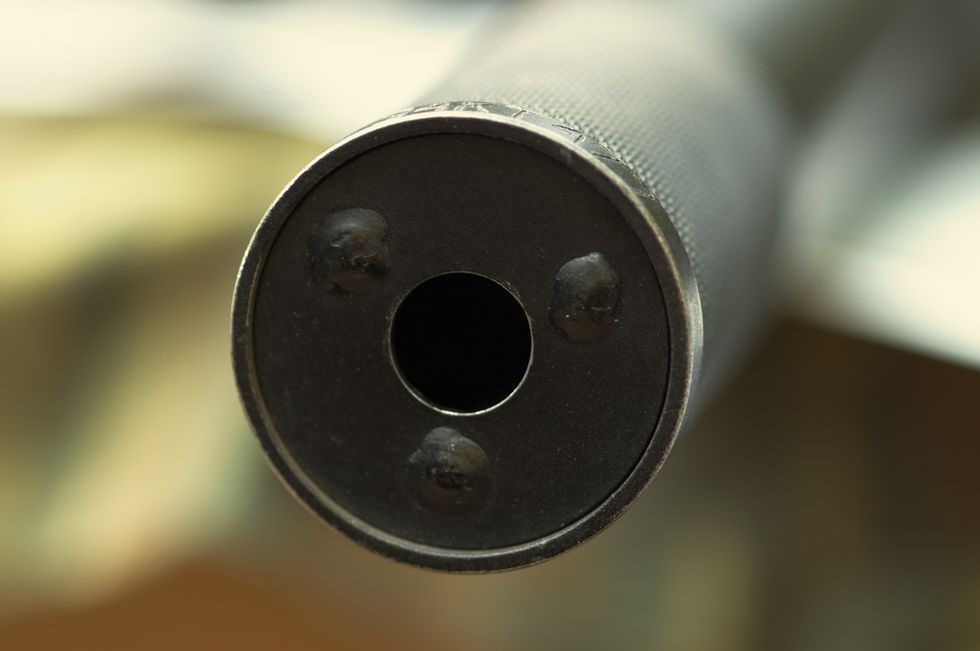
© 2026 Blaze Media LLC. All rights reserved.
Here’s the First All-Metal, 3-D-Printed Firearm Suppressor, but the Company That Made It Doesn't Want to Be Named
April 09, 2015
"Something of a black art."
We've seen plenty of stories about 3-D-printed guns, but what about accessories, like suppressors?
The Truth About Guns, a blog that "[explores] the ethics, morality, business, politics, culture, technology, practice, strategy, dangers and fun of guns," recently got its hands on a 3-D-printed, metal suppressor, also commonly known as a silencer, for a test run.
Posted by The Truth About Guns on Monday, March 30, 2015
Describing the design of traditionally made silencers as "something of a black art and extremely complex," Nick Leghorn for blog tested out this version made with a 3-D printer and wrote:
Running the can side-by-side with a Liberty Mystic-X, the 3D printed model is slightly louder but still well within the realm of “hearing safe” with subsonic 300 AAC Blackout ammunition. With a little tweaking that could probably be improved, and given the efficiencies of 3D printing, that shouldn’t take too long.The only real concern I had with the can is durability. A circumferentially welded titanium can will stand up to an insane level of stress before it finally bursts or wears out. But with a 3D printed suppressor I have no idea about how short the barrel can be on a rifle or how many rounds it can go before it starts to fail. If this were to be commercially available, I’d want to see some serious testing before I bought one, and even then I might hold off for a couple years to see how things went.
Leghorn said that the company who created the 3-D-printed silencer asked to remain anonymous because "they’re a parts manufacturer and don’t want to be in the gun business." He added that they only made the suppressor, which is not for sale, as "an example of what’s possible with 3D printing."
Overall, Leghorn said that the benefit using 3-D printer technology to produce gun parts like this is that it can facilitate a faster testing process for new designs.
"Instead of needing an entire machine shop dedicated to R&D just to produce the testing versions of new cans, they can spring forth fully-formed and ready for action from a metal 3D printer instead and go straight to testing," he wrote on the Truth About Guns.
Read Leghorn's full review on the blog.
(H/T: io9)
—
Front page image via Shutterstock.
Want to leave a tip?
We answer to you. Help keep our content free of advertisers and big tech censorship by leaving a tip today.
Want to join the conversation?
Already a subscriber?
more stories
Sign up for the Blaze newsletter
By signing up, you agree to our Privacy Policy and Terms of Use, and agree to receive content that may sometimes include advertisements. You may opt out at any time.
Related Content
© 2026 Blaze Media LLC. All rights reserved.
Get the stories that matter most delivered directly to your inbox.
By signing up, you agree to our Privacy Policy and Terms of Use, and agree to receive content that may sometimes include advertisements. You may opt out at any time.






